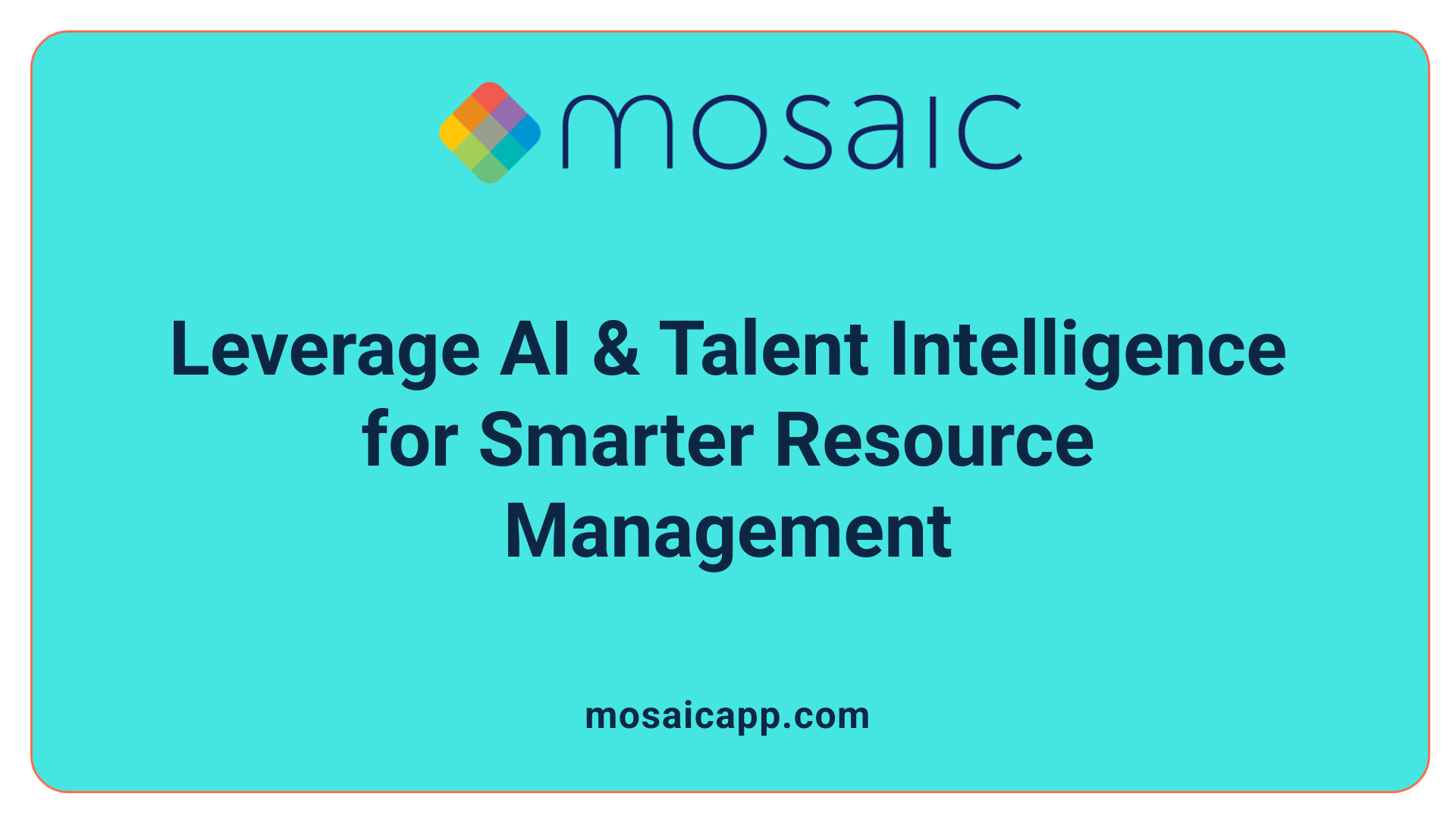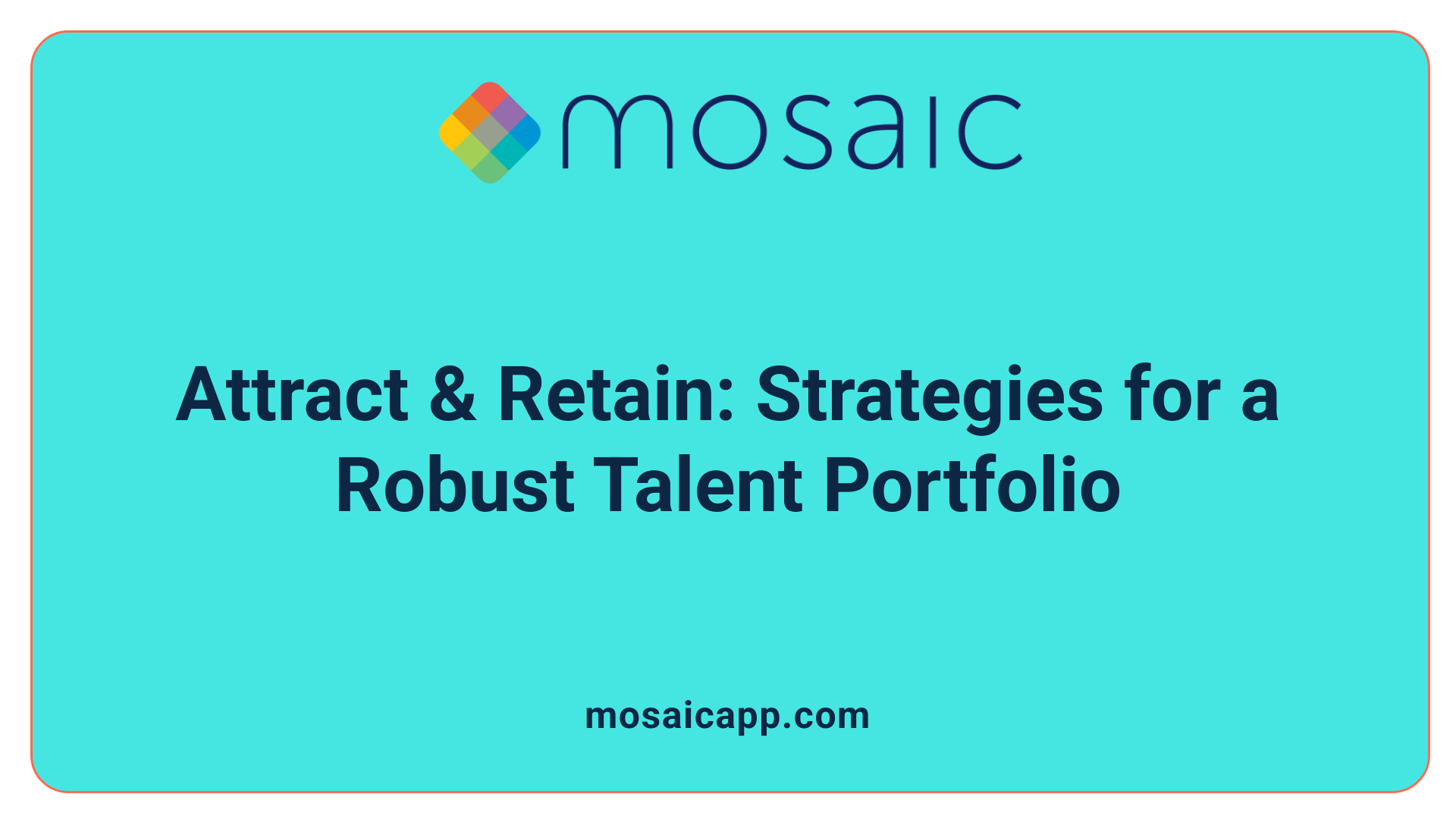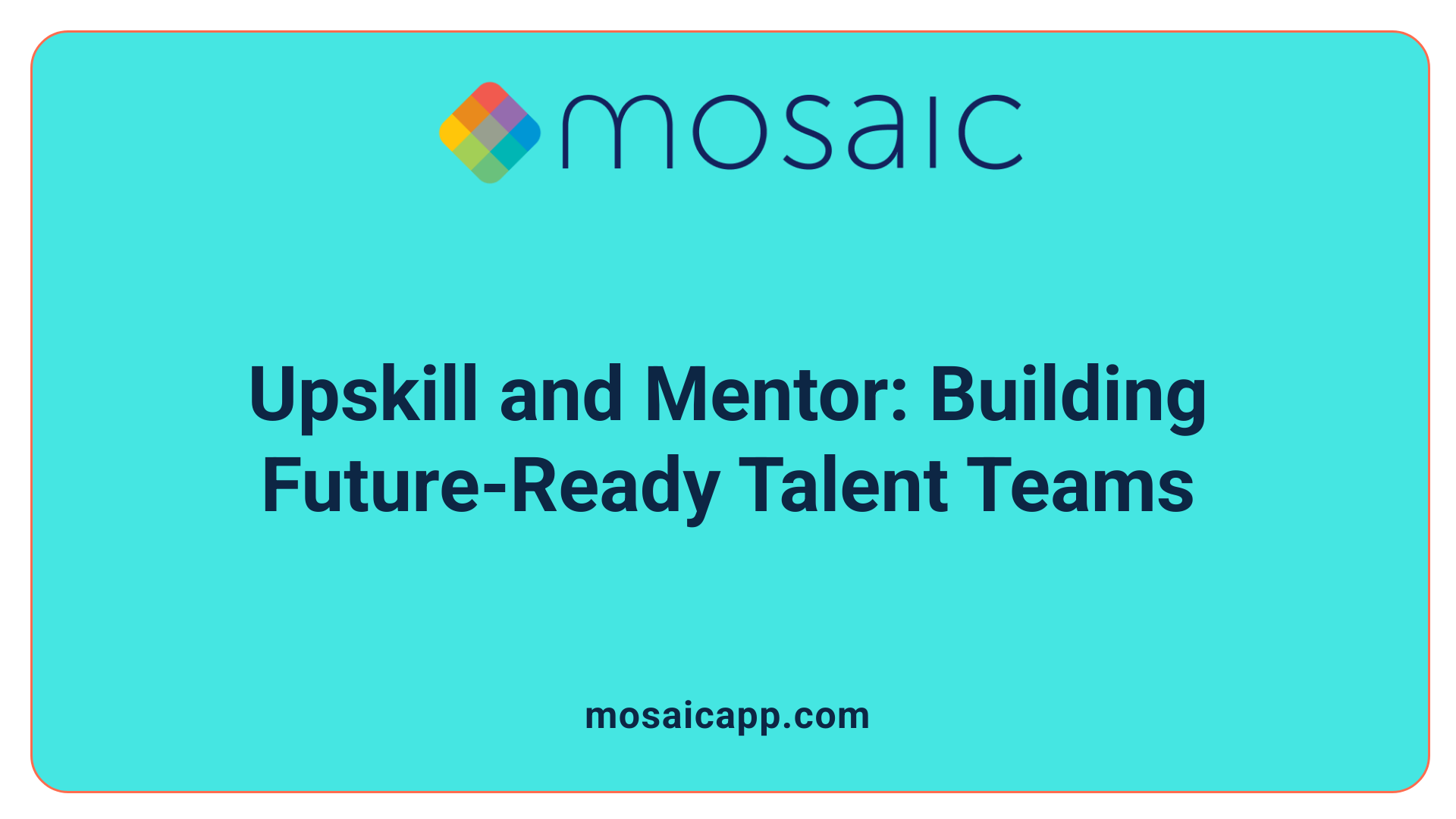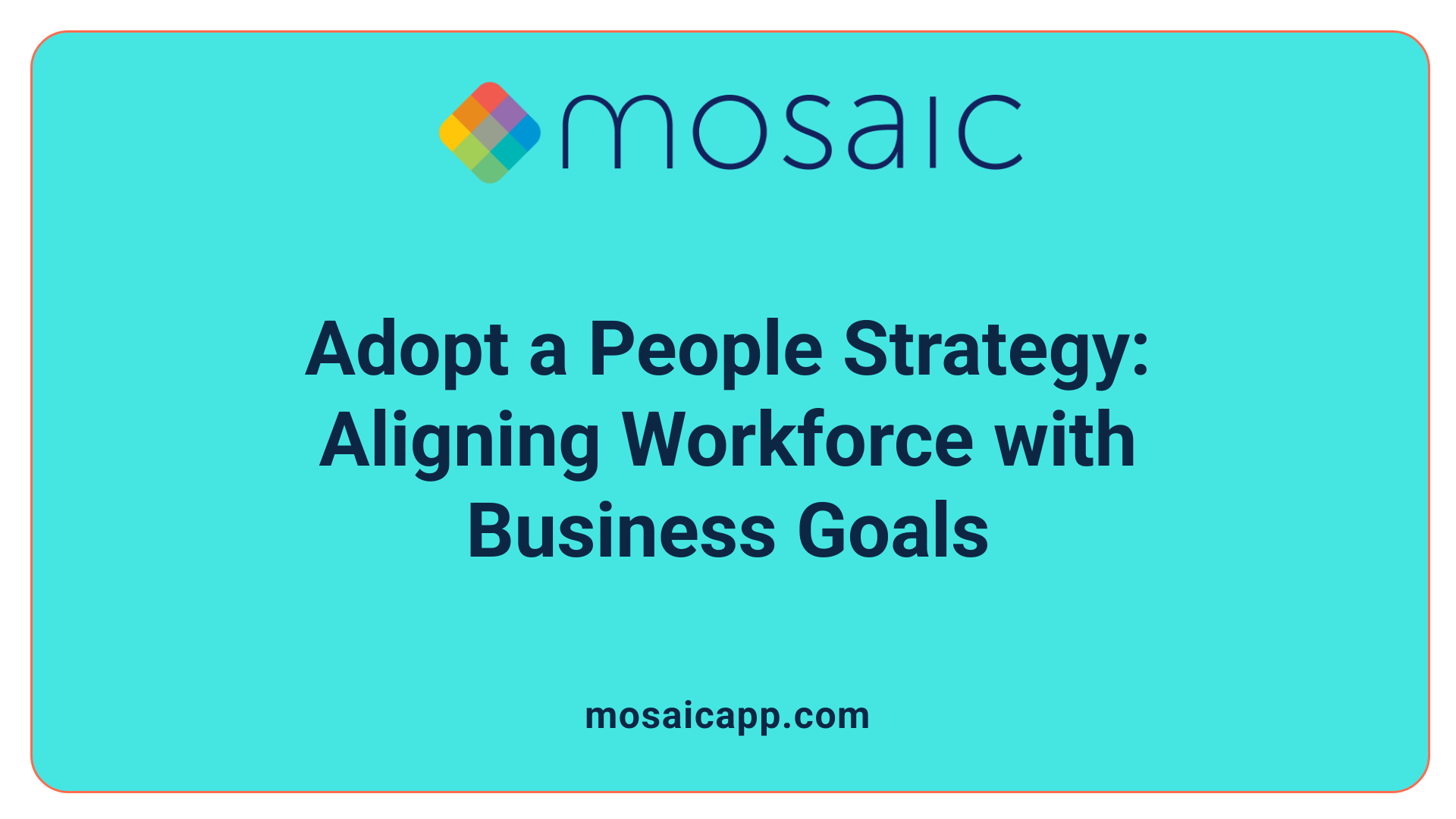The Shift in Managing People and Talent
Organizations have moved beyond traditional personnel management towards a sophisticated talent portfolio management approach, especially critical in project and resource management contexts. This evolution reflects a strategic shift focusing on optimizing human capital through advanced practices and technologies, aligning talent strategies with broader organizational goals for enhanced competitiveness and agility.
Understanding the Evolution from Personnel to Talent Portfolio Management
What is the significance of moving from personnel management to talent portfolio management?
The transition from traditional personnel management to talent portfolio management marks a strategic evolution in how organizations manage their human capital. Personnel management often centers on administrative tasks such as payroll, attendance, and compliance. In contrast, talent portfolio management adopts a broader, more integrated approach. It views employees as valuable assets with varying skills, experiences, and potential rather than just roles to be filled.
Differences between personnel management and talent portfolio management
Personnel management focuses on maintaining the workforce and handling immediate staffing needs. Its scope is often transactional and reactive. Talent portfolio management, however, emphasizes strategic planning and ongoing development of employees. It involves:
- Building diverse talent portfolios that are multi-dimensional and aligned with organizational goals.
- Continuous assessments of skills and experiences using dynamic talent data.
- Leveraging AI-powered platforms for real-time insights to match skills with project demands.
- Facilitating career growth, fostering agility, and supporting long-term employee development.
This shift reflects a move from managing headcount to managing capabilities and potential.
Strategic role of talent portfolio management in modern organizations
Modern organizations recognize talent portfolio management as a cornerstone for sustaining competitive advantage. By integrating talent strategies with business objectives, companies foster:
- Agility to adapt quickly to market changes and emerging opportunities.
- Incremental innovation by creating learning cultures and investing in continuous upskilling and reskilling.
- Enhanced employee engagement and retention through tailored development and career pathways.
Such strategic talent management is critical in complex environments where project portfolio success depends heavily on having the right people with the right skills at the right time.
Impact on project and resource management
The evolution toward talent portfolio management significantly influences project and resource management practices. Effective resource management requires detailed knowledge of personnel availability, skills, and interests. Talent portfolio approaches enable:
- Improved staffing accuracy through AI-enabled talent intelligence platforms.
- Dynamic allocation of talent based on real-time data, leading to enhanced project outcomes and margin improvements.
- Integration of resource management with broader organizational strategies, ensuring alignment across projects and portfolios.
By focusing on talent as the critical resource, organizations boost productivity, foster innovation, and strengthen their project management capabilities.
| Aspect | Personnel Management | Talent Portfolio Management |
|---|---|---|
| Focus | Administrative, transactional | Strategic, integrated, developmental |
| Approach | Task-oriented | Asset-oriented with career growth focus |
| Use of Technology | Basic systems, manual tracking | AI-powered platforms and real-time talent insights |
| Impact on Project Staffing | Limited to availability and role assignment | Dynamic, skill- and interest-based allocation for optimal fit |
| Organizational Alignment | Minimal strategic integration | Strong alignment with business goals and workforce planning |
Strategic Frameworks Supporting Talent Portfolio Management
How have organizational standards evolved to support talent portfolio management?
Organizations like the Project Management Institute (PMI) have significantly advanced the recognition and structuring of talent portfolio management by publishing clear standards for portfolio and program management. These standards elevate the disciplines beyond traditional project management, positioning them as strategic organizational functions.
PMI's standards distinctly outline the knowledge, skills, and abilities (KSAs) necessary for managers operating at different levels—project, program, and portfolio. This differentiation clarifies expectations for technical, behavioral, and contextual expertise, with designated competence levels ranging from low to very high depending on role complexity.
Such detailed standardization not only legitimizes advanced management roles but also fosters a defined career pathway. Professionals can progress from project management through program management and ultimately to portfolio leadership by developing specific KSAs. This structure encourages ongoing professional development and helps organizations recognize the strategic value of managing talent portfolios effectively.
By embedding these standards in organizational frameworks, talent portfolio management gains recognition as a critical strategic area. This alignment ensures that the right talent is developed and positioned to steer complex project portfolios, directly contributing to business agility and competitive advantage.
Career Pathways: From Project Management to Portfolio Leadership
What career pathways exist between project management and portfolio management?
Career pathways in project-related roles typically follow an evolutionary path starting from project management, advancing through program management, and leading to portfolio management. This progression reflects increasing levels of responsibility, strategic oversight, and organizational impact.
Individuals often begin by managing specific projects, where they develop technical skills, behavioral competencies, and contextual knowledge. With experience and education, they advance to program management, overseeing multiple related projects to achieve broader business goals. Eventually, practitioners may move into portfolio management roles, which require strategic alignment of multiple programs and projects with organizational objectives.
How important are education, practice, and organizational support?
Education, practical experience, and organizational support form the foundation for effective career development. Formal education provides the theoretical grounding and frameworks necessary to handle complex management challenges. Practical experience applies this learning in real-world settings, honing talents and exposing individuals to diverse scenarios.
Organizational support plays a crucial role in facilitating growth by fostering professional development opportunities, mentorship, and a culture that values continuous learning. Structured career planning encourages practitioners to build competencies sequentially—from project to program to portfolio management—ensuring readiness for each advancement.
How are formal and informal career planning tools used?
Career progression is supported by both formal and informal tools and processes. Formal tools include competency frameworks and certification programs that define the knowledge, skills, and abilities required at each level. Informal methods involve mentorship, networking, and self-directed learning, which complement structured development plans.
Moreover, organizations use these tools to map career trajectories, allowing employees to visualize potential growth pathways. This clarity helps individuals engage proactively in their development and align their ambitions with organizational needs.
Together, these approaches create a seamless transition for project practitioners advancing to portfolio leadership, enhancing talent retention and organizational agility within dynamic project environments.
Comprehensive Competencies: Technical, Behavioral, and Contextual Skills
What competencies differentiate project, program, and portfolio managers?
The competencies required for project, program, and portfolio managers differ significantly in their scope and depth, reflecting the varying complexity and strategic nature of each role. These competencies are categorized broadly into technical skills, behavioral skills, and contextual knowledge.
Project managers primarily focus on technical competences, such as scheduling, budgeting, risk management, and team coordination. Their role demands a high level of proficiency in executing project plans and ensuring deliverables meet quality standards within the defined scope and timeline.
Program managers oversee multiple related projects. Therefore, while they still require strong technical skills, they place greater emphasis on behavioral competencies—leadership, communication, conflict resolution, and stakeholder management. These skills enable program managers to integrate project outcomes, balance resource allocation, and navigate complex interpersonal dynamics across project teams.
Portfolio managers operate at an even higher organizational level where strategic alignment and decision-making are paramount. Their expertise spans comprehensive contextual knowledge, including business strategy, market trends, financial acumen, and organizational governance. Additionally, portfolio managers exhibit advanced behavioral skills to influence senior stakeholders and drive portfolio performance that directly supports organizational goals.
The expertise levels across these roles vary from very high in their core competencies to moderate or lower in peripheral areas. For example, portfolio managers might have lower involvement in day-to-day technical project management but require very high proficiency in strategic oversight and governance. This variation underscores the importance of defining clear development pathways based on KSAs to successfully transition between these roles.
In sum, project, program, and portfolio management are distinguished not only by their focus areas but also by the evolving blend of technical know-how, interpersonal capabilities, and contextual insights necessary for success. The balanced development of these competency dimensions is critical for individuals aspiring to progress in these careers and for organizations aiming to cultivate effective leadership across all levels of project-related functions.
Talent Intelligence and AI: Transforming Resource and Talent Management

How does AI improve talent and resource management?
Artificial intelligence (AI) significantly enhances talent and resource management by providing organizations with powerful tools for real-time, data-driven decision-making. Talent intelligence platforms powered by AI analyze large volumes of career, skill, and performance data to generate insights about employees’ capabilities and potential fit for specific projects.
Role of AI in staffing and resource allocation
AI moves resource management beyond traditional, often manual methods—such as spreadsheets—toward dynamic and highly efficient systems. These AI-powered platforms quickly match individuals’ skills, experience, and interests with project needs, allowing for rapid allocation of the best talent available. This leads to improved project outcomes by ensuring the right people are assigned promptly, reducing delays and underutilization.
Use of talent intelligence platforms
Talent intelligence platforms aggregate and interpret diverse data sources, capturing not only current skills but also the evolving experiences employees gain through completing projects. This dynamic talent data enables continuous updates and smarter staffing decisions. Organizations leveraging these platforms build versatile, multi-dimensional talent portfolios that support career growth and organizational agility.
Integration with availability and booking systems
To maximize effectiveness, AI-based resource management systems integrate seamlessly with existing availability and booking tools. This integration offers a comprehensive, real-time view of resource capacity, planned commitments, and potential scheduling conflicts. With this holistic overview, project managers can optimize staffing assignments with precision and agility.
In summary, the combination of AI and talent intelligence platforms transforms how organizations manage their human resources by increasing efficiency, accuracy, and the strategic alignment of talent to project demands. This advancement supports better client outcomes, greater margins, and heightened employee engagement.
Dynamic Talent Data: Real-Time Updates for Agile Staffing
Capturing Evolving Employee Skills Through Projects
Dynamic talent data refers to the continuous collection and updating of employees' skills, experiences, and competencies as they complete various projects. Unlike static records, this approach tracks actual, up-to-date capabilities derived from real project involvement, making the talent inventory highly accurate and reflective of current workforce capacity.
Benefits of Dynamic Updates for Staffing
By maintaining real-time profiles, organizations can make faster and smarter staffing decisions. This dynamic update enables matching the right individuals to projects based on current skills and availability rather than relying on outdated information. It mitigates risks like poor fit or resource shortages and boosts efficiency in resource allocation.
Impact on Organizational Agility
With dynamic talent data, companies gain flexibility to respond swiftly to shifting project demands or emerging opportunities. This agility enhances overall project performance and client outcomes. Furthermore, it supports building diverse and multi-dimensional talent portfolios that foster career growth and adaptability within the organization.
Role of Dynamic Talent Data in Agile Resource Management
Dynamic talent data continuously captures employees' evolving skills and experiences as they complete projects, enabling organizations to maintain an accurate, up-to-date talent inventory. This real-time insight supports agile staffing decisions by matching individuals to suitable opportunities promptly, thereby enhancing responsiveness, project outcomes, and organizational agility in managing talent portfolios.
Building Diverse, Multi-Dimensional Talent Portfolios

Why is diversity important in talent portfolio management?
Diversity in talent portfolios is crucial because it brings a wide range of perspectives, skills, and experiences to the table. This variety fosters innovation and creativity, enabling organizations to address complex challenges more effectively. A multi-dimensional talent portfolio allows companies to adapt quickly to shifting project requirements and market demands.
Advantages of diversity in talent portfolios
- Innovation and Creativity: Varied backgrounds and expertise lead to fresh ideas and unique problem-solving approaches.
- Enhanced Adaptability: Diverse skill sets increase organizational agility to tackle unforeseen changes.
- Improved Decision Making: Multiple viewpoints reduce blind spots and improve strategic choices.
Enabling career growth and organizational agility
Diverse talent portfolios create clear pathways for career progression by recognizing varied competencies and developmental needs across employees. This focus on individual skills and interests promotes engagement and retention. Furthermore, organizations become more flexible, capable of dynamically allocating talent to high-priority projects, enhancing overall performance and competitiveness.
Methodologies for portfolio construction
Building a diverse talent portfolio involves:
- Dynamic Talent Data Capture: Continuously update employee skills and experiences from ongoing projects.
- AI-Powered Talent Intelligence Platforms: Utilize real-time analytics to match skills with project demands.
- Inclusive Talent Management Practices: Embrace diverse recruitment, development, and retention strategies to cultivate multidimensional expertise.
By strategically blending these approaches, organizations construct talent portfolios that not only meet current needs but also anticipate future challenges, ensuring sustainable growth and success.
Linking Talent Management to Organizational Performance
How does talent management enhance organizational performance?
Effective talent management promotes alignment between employee skills and organizational goals, directly enhancing productivity and competitiveness. Organizations that synchronize their talent strategies with business objectives create a high-performing workforce capable of meeting evolving project demands.
What role do HR and leadership play in talent management?
Talent management is a collaborative endeavor involving HR professionals working closely with managers, supervisors, and executives. This partnership ensures integrated processes such as recruitment, training, performance management, and succession planning align with the broader organizational strategy. HR's leadership in fostering a culture of learning and employee engagement is crucial for sustaining motivation and retention.
What measurable outcomes are observed in project-based organizations?
Project-based organizations benefit from improved project staffing accuracy, leading to higher client satisfaction and better project outcomes. Effective talent management enhances organizational agility, enabling rapid reallocation of skilled personnel to priority projects. Additionally, companies experience increased margins and employee engagement, reduced turnover costs, and stronger employer branding, all contributing to long-term success.
The synergy created by aligning talent capabilities with strategic goals equips organizations to adapt swiftly and outperform competitors, reinforcing the critical link between talent management and organizational performance.
Attraction and Retention Strategies in the Era of Talent Portfolio Management

What strategies support attracting and retaining high-performing employees?
Attracting top talent begins with a targeted recruitment focus on the top 5% of candidates who bring exceptional skills and potential. Organizations enhance their appeal by making compelling, "magnetic" offers that resonate with these high performers, supported by data analytics to optimize hiring decisions and identify best fits efficiently.
Improving employee engagement and retention relies on fostering a positive workplace culture where employees feel valued and supported. Revising compensation structures to be competitive and tailored to employee needs is essential, especially in response to workforce challenges like the Great Resignation. Additionally, broadening candidate pools to include nontraditional talent increases diversity and organizational resiliency.
Ongoing career development plays a crucial role, including upskilling and reskilling programs that address evolving business needs and close skills gaps. Engagement initiatives, recognition programs, and mentoring help sustain motivation and commitment, reducing costly turnover and boosting organizational performance.
How do these strategies respond to workforce challenges?
In today's rapidly changing labor market, organizations face retention challenges intensified by the Great Resignation. To counter this, companies have revised compensation, enhanced workplace culture, and embraced inclusive hiring to retain and grow their talent portfolios.
Talent portfolio management integrates these approaches by continuously updating employee skill profiles and aligning individual growth with strategic organizational goals. This dynamic, talent-centered approach ensures that the right skills are available for high-priority projects while providing career pathways that retain high performers and enhance overall productivity.
By combining data-driven recruitment, thoughtful employee experience design, and strategic development initiatives, organizations build resilient talent portfolios that sustain competitive advantage in project and portfolio management environments.
The Critical Role of Training, Mentoring, and Upskilling

Closing Skills Gaps Through Development Initiatives
Organizations face ongoing challenges in filling skill gaps caused by rapidly changing business demands. To tackle this, training, mentoring, and upskilling initiatives have become essential components of talent portfolio management. These programs equip employees with updated expertise that aligns with evolving project and organizational needs. Strategic investment in continuous learning fosters a workforce that is both adaptable and capable of taking on new roles within program and portfolio management.
Importance of Social and Emotional Skills
Beyond technical competencies, social and emotional skills—such as empathy, communication, and adaptability—are crucial. Embedding these soft skills into development programs improves team dynamics and collaboration, leading to stronger project outcomes. Such skills ensure that employees can effectively navigate the complexities of team interactions and organizational change.
Cost-Effectiveness of Upskilling Compared to Hiring
Upskilling existing talent through training and mentoring is often more economical than recruiting external candidates. This approach reduces turnover costs, shortens onboarding time, and maximizes the value of institutional knowledge. Additionally, it supports employee retention by demonstrating organizational commitment to career growth.
Why Is Upskilling and Mentoring Essential in Talent Portfolio Management?
Upskilling and mentoring address skill gaps by enabling employees to adapt to evolving business needs and advance their careers. Emphasis on social and emotional skills like empathy and adaptability fosters effective team dynamics. These development initiatives are cost-effective compared to external hiring and aid in retaining valuable talent, ensuring that the organization's talent portfolio remains robust and future-ready.
The Shift Toward a Comprehensive People Strategy

How does a people strategy expand on traditional talent management?
A people strategy broadens the scope of traditional talent management by proactively segmenting talent and integrating comprehensive total reward strategies. It emphasizes diversity and inclusion, supporting talent segmentation to ensure the right mix of skills and perspectives. Unlike traditional approaches, it also includes dynamic workforce planning that manages not only full-time employees but contingent and contract workers, adapting swiftly to organizational and market changes.
Beyond Talent Management: Integrated Workforce Planning
Central to the people strategy is the integration of workforce planning with business models. This approach dynamically assesses the demand and supply of skills across the organization, helping to identify gaps and adjust through reskilling, redeployment, or strategic hiring. Workforce plans become living strategies that rethink resource allocation and agilely respond to evolving business priorities.
Talent Segmentation and Diversity Integration
Talent segmentation under a people strategy identifies pivotal roles and talent pools crucial to business success. Embracing diversity integration ensures a multifaceted workforce that enriches decision-making and fosters innovation. This comprehensive approach cultivates an inclusive culture where diverse talent can thrive, aligning talent development with organizational values.
Aligning Workforce Strategy with Business Objectives
A people strategy ties talent management tightly to the organization's strategic goals. For example, a company transitioning from healthcare services to wellness provisions adjusts its workforce structure, roles, and training to support this new direction. This alignment guarantees that workforce capabilities evolve hand-in-hand with business objectives, supporting continuous innovation and competitive advantage.
By expanding traditional human resource practices into a holistic people strategy, organizations create an adaptable, skilled, and engaged workforce ready to meet future market challenges and opportunities.
Technology and Data Analytics as Pillars of Modern Talent Management
What is the role of technology and data analytics in talent management?
Technology and data analytics play a pivotal role in modern talent management by enabling organizations to make smarter, evidence-based decisions. Advanced analytics allow managers to track employee performance, identify skill gaps, and monitor progression in real time. This capability enhances workforce agility and supports the strategic alignment of talent with organizational goals.
Using analytics for decision-making and performance tracking
Analytical tools collect vast amounts of workforce data, from skills inventories to project outcomes, allowing organizations to develop clear insights. AI-powered talent intelligence platforms analyze such data to match employee capabilities and interests with the right project opportunities. This not only optimizes resource allocation but also contributes to higher employee satisfaction and engagement.
Enhancing employee engagement with technology
Technology-driven systems support ongoing feedback and recognition, boost learning through digital simulations, and personalize career development paths. Integrating AI with resource management tools ensures dynamic updates of employees’ skills and availability, enabling swift responses to changing project needs. These innovations foster a supportive environment where employees feel valued and motivated.
Examples of technology-enabled talent management practices
Organizations utilize bespoke digital training simulations to accelerate skill acquisition and use agile learning platforms to upskill staff rapidly. AI-integrated resource management systems provide comprehensive overviews of talent pools, improving staffing accuracy and project outcomes. Such approaches contribute to improved retention, productivity, and organizational performance.
| Area | Technology Utilized | Benefits Offered |
|---|---|---|
| Decision-making & Analytics | AI talent intelligence platforms | Real-time skill matching, optimized staffing |
| Employee Engagement | Digital simulations, feedback apps | Personalized development, increased motivation |
| Performance Tracking | Data analytics dashboards | Continuous monitoring and quick interventions |
| Resource Management | Integrated AI and booking systems | Dynamic staffing visibility and allocation |
Through adopting technology and data analytics, organizations can transform talent management into a strategic lever for competitive advantage and sustained success.
Integrating Talent and Resource Management for Project and Portfolio Success
Resource Management as the Foundation of Project and Portfolio Management
Resource management underpins all stages of project and portfolio management. It bridges initiation, planning, execution, and governance by ensuring appropriate allocation of personnel, equipment, and timing. Effective resource management involves detailed oversight of factors such as staff availability, illness, and equipment maintenance to keep projects on schedule.
Importance of Knowing Resource Availability and Allocation
Knowing resource availability is crucial. Accurate tracking of employee skills, project experiences, and real-time availability supports well-informed staffing decisions. Dynamic talent data that updates as employees complete projects enable organizations to allocate resources quickly and efficiently. This flexibility improves project outcomes by matching the right people with the right tasks at the right time.
Linkage of Talent Management to Resource Planning
Talent management amplifies resource planning by focusing on attracting, developing, and retaining skilled employees who are critical assets in projects. Integrating talent intelligence platforms and AI-powered resource systems provides real-time insights into workforce capabilities and interests. Such integration helps organizations build agile, diverse talent portfolios and facilitates better project staffing, enhancing client satisfaction and organizational margins.
By combining resource management with strategic talent management, organizations achieve superior alignment between project demands and workforce capacity. This integrated approach not only improves productivity but also boosts employee engagement and retention, driving competitive advantage in project portfolio management.
Answering the Question: How are talent and resource management integrated in project portfolio management?
Resource management is central to project and portfolio management, encompassing planning and allocating personnel, equipment, and timing effectively. By integrating talent management, organizations leverage human capital more strategically—understanding availability, skills, and interests—to ensure optimal resource deployment, meeting project timelines and delivering superior client outcomes, reinforcing the critical interface between talent and project success.
The Future of Talent Portfolio Management in Project Environments
As organizations continue to navigate complex project landscapes, the transition from traditional personnel management to sophisticated talent portfolio management becomes imperative. Embracing advanced frameworks, AI-driven intelligence, and holistic people strategies enhances the ability to attract, develop, and retain high-performing talent. This evolution not only drives superior project outcomes but also builds resilient, agile organizations poised to thrive in an ever-changing business environment.


